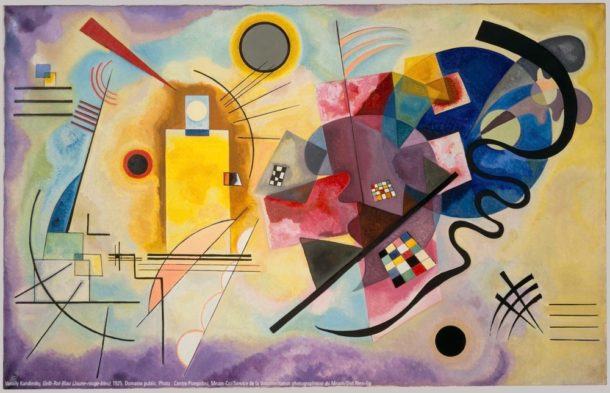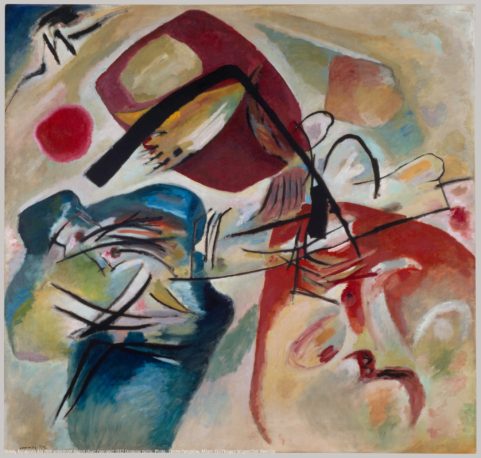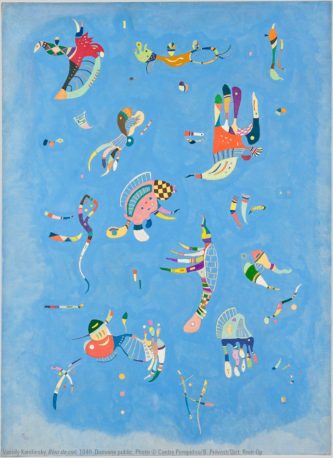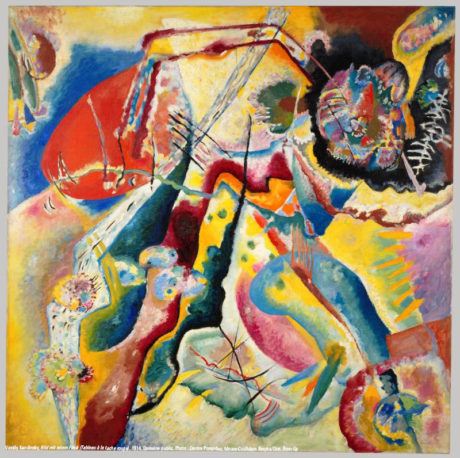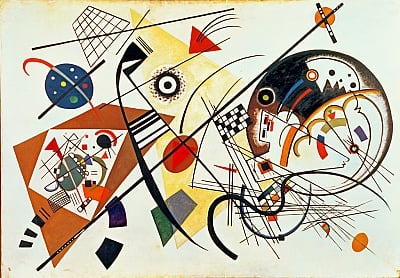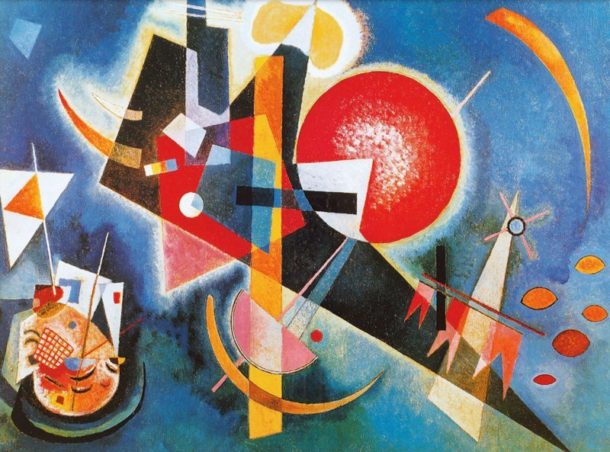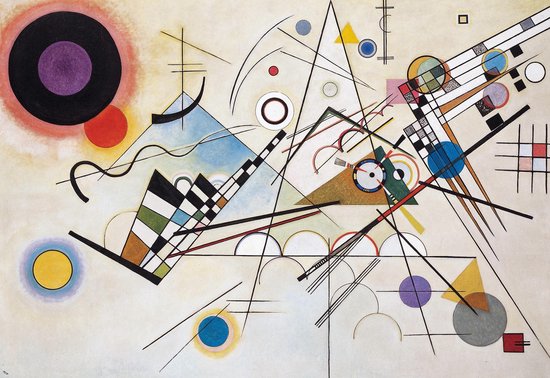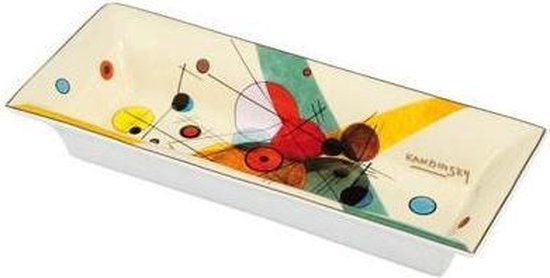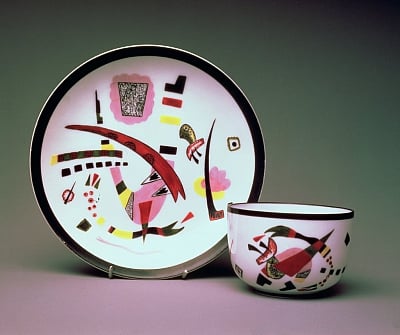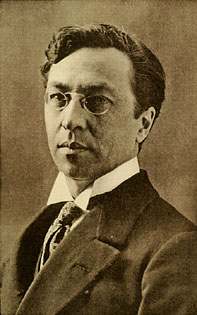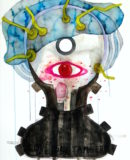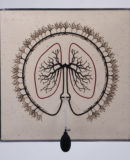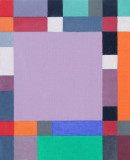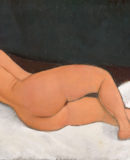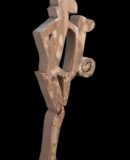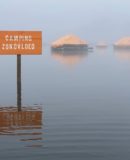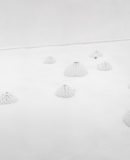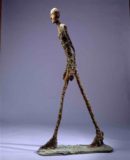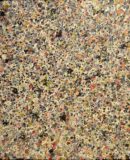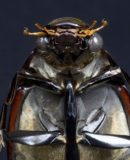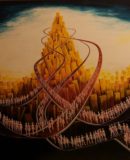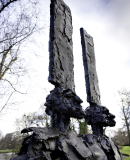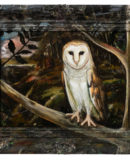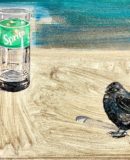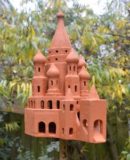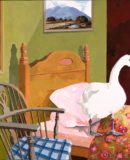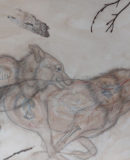World Fine Art Professionals and their Key-Pieces, 445 - Wassily Kandinsky
World Fine Art Professionals and their Key-Pieces, 445 – Wassily Kandinsky
About two years ago I attended the press conference of Hermitage Amsterdam on the occasion of the exhibition ‘Russian avant-garde – Revolution in art’. I saw two beautiful paintings by Wassily Kandinsky, as well as his fantastic illustrations on teacups and plates.
The Russian avant-gardists, with best-known artists were Kazimir Malevich and Wassily Kandinsky, made a name for themselves with their radical innovations in painting. But they also focused on the design of interiors and theater sets, utensils and books. The most surprising medium for the new artistic imagery was porcelain, the favorite material of the tsars. It was widely available and completely white, a reason for many artists to work with it.
Colors
Kandinsky was born in Moscow in 1866, the son of Lidia Ticheeva and Vasily Silvestrovich Kandinsky, a tea merchant. One of his great-grandmothers is Princess Gantimurova, a Mongolian princess. As a child he was fascinated by color. His interest in color symbolism and psychology increases as he grows up. In 1889 he is part of an ethnographic research group that travels to the Vologda region north of Moscow. In Looks on the Past he says that the houses and churches were decorated with such glittering colors that when he entered he felt as if he were entering a painting. A while later he compared painting to composing music: “Color is the keyboard, the eyes are the hammers, the soul is the piano with many strings. The artist is the hand that plays, that touches some key, to to cause vibrations in the soul.”
Via Odessa to Munich
Kandinsky spent his childhood in Odessa, where he graduated from the Grekov Odessa Art school. He then studied law and economics in Moscow and was so successful that he was offered a professorship. However, Kandinsky chooses art, at the age of 30 he starts drawing and painting, and he starts with anatomy.
In 1896, Kandinsky settled in Munich, where he studied first at Anton Azbe’s private school and then at the Academy of Fine Arts. In 1901 he founded the Phalanx artist group in Munich with Wilhelm Hüsgen and other artists. He heads the associated ‘School for Painting and Life Drawing’. While teaching there, he meets Gabriele Münter, who becomes his partner. In 1902, Kandinsky’s work was exhibited for the first time in the Berlin Secession.
Der Blaue Reiter
In 1903 he painted Der Blaue Reiter, showing a figure dressed in blue on a fast horse running through a rocky meadow. Later, in 1911, the painting became a symbol of the art group Der Blaue Reiter, set up by Kandinsky and his kindred spirit Franz Marc. Gabriele Münter, Alexej von Jawlensky, August Macke, Marianne von Werefkin and Heinrich Campendonck join.
In 1911/12 he published Der Blaue Reiter Almanac with Franz Marc, containing two colored and signed woodcuts by Wassily Kandinsky and Franz Marc. It includes contributions from August Macke, Arnold Schönberg and others. The Almanac, published by Reinhard Piper, has become one of the most important art books of the 20th century. The almanac and Kandinsky’s treatise ‘Über das Geistige in der Kunst’, published in 1910, are a defense of abstract art and a confirmation that all forms of art are equally capable of reaching a level of spirituality.
Kandinsky is convinced that color can be used in a painting as something autonomous, separate from the visual description of an object or form. Interest in Kandinsky grew rapidly when Sadleir published an English translation, ‘On the Spiritual in Art’, in 1914. That year, extracts from the book were published in Percy Wyndham Lewis’s magazine Blast and Alfred Orage’s cultural weekly newspaper The New Age.
Moscow
In 1914, after the outbreak of the First World War, Kandinsky returns to Moscow. After the Russian Revolution, 1917, he becomes an insider in the cultural administration of Anatoly Lunacharsky and helps establish the Museum of the Culture of Painting. In 1916 he met Nina Andreevskaya, whom he married in 1917.
From 1918 to 1921, Kandinsky was involved in the cultural politics of the Soviet Union and contributed to art education and museum reform. He painted little during this period, but devoted his time to artistic education, with a program based on form and color analysis. He also helps organize the Institute of Artistic Culture in Moscow, of which he becomes its first director. His spiritual, expressionist view of art is ultimately rejected by the radical members of the Institute as too individualistic and bourgeois. In 1921, Kandinsky was invited by the founder, architect Walter Gropius, to go to Germany to participate in the Bauhaus in Weimar.
Via Weimar to Paris
His spiritual view appears to be too far removed from the materialism of the workers’ state. He taught at the Bauhaus School of Art and Architecture from 1922 until the Nazis closed it in 1933. He then moves to France, where he lives for the rest of his life. In 1939 he became a French citizen and produced his most prominent art.
In his Paris apartment, in a living room studio, he paints biomorphic shapes with smooth, non-geometric contours – shapes that suggest microscopic organisms but express the artist’s inner life. They are original color compositions, reminiscent of Slavic popular art. He also occasionally mixes sand with paint to give his paintings a grainy, rustic texture.
Kandinsky became one of the pioneers of abstraction in Western art, and his experiences of the Russian Revolution were a determining element.
The Hermitage Museum in Amsterdam cut ties with the museum of the same name in Saint Petersburg last year, after the Russian invasion of Ukraine. It continued under the name of H’ART Museum.
https://ifthenisnow.eu/nl/personen/wassily-kandinsky
Disclaimer: The views, opinions and positions expressed within this guest article are those of the author Walter van Teeffelen alone and do not represent those of the Marbella Marbella website. The accuracy, completeness and validity of any statements made within this article are not guaranteed. We accept no liability for any errors, omissions or representations. The copyright of this content belongs to Walter van Teeffelen and any liability with regards to infringement of intellectual property rights remains with the author.

